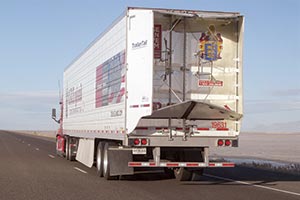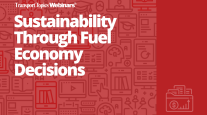Trailer Group Asks Court to Review Final Greenhouse-Gas Phase 2 Rule

This story appears in the Jan. 23 print edition of Transport Topics.
Two trade associations filed petitions for review of the Phase 2 final federal rule on greenhouse-gas regulations for trucks, and the U.S. Court of Appeals for the D.C. Circuit has combined them into a single case to be heard by a panel of three judges to be chosen later.
The Truck Trailer Manufacturers Association was joined by the Racing Enthusiasts and Suppliers Coalition in asking the court to overturn parts of the regulation published Oct. 25 in the Federal Register by the Environmental Protection Agency and the National Highway Traffic Safety Administration. The filing deadline was Dec. 27.
TTMA asked the court to eliminate Section IV of the rule, which covers trailers.
“Petitioners request that this court hold unlawful, vacate, enjoin and set aside the final rule provisions applicable to trailers and that the court provide such additional relief as may be necessary and appropriate,” the TTMA filing said.
The petition also said the rule “is in excess of the agencies’ statutory authority,” “contrary to the Clean Air Act,” and “arbitrary, capricious and otherwise contrary to law.”
Phase 2 calls for regulating the production of truck trailers in four stages: 2018, 2021, 2024 and 2027. In contrast, truck and engine makers will be regulated in the final three of those four years.
If Section IV remains in place, it will be the first time trailer makers are regulated by EPA.
EPA spokeswoman Christie St. Clair confirmed that the filings from TTMA and the race car group are the only two challenges to Phase 2.
TTMA President Jeff Sims said in an interview that EPA has no business regulating trailer makers under the Clean Air Act because trailers produce no emissions.
“They overstepped their bounds. The SmartWay program is working perfectly for our industry. Those who can use these devices [aerodynamic attachments] are benefiting, but the GHG rule forces manufacturers to sell products their customers can’t use. It just adds weight and cost,” said Sims, whose group represents manufacturers that sell 90% of the nation’s trailers.
TTMA’s board of directors authorized the appellate review “with overwhelming support,” he said. A statement from the group said this is the first time in TTMA’s 75-year history that it has filed a legal challenge to a federal rule.
Prior to publishing the final review, EPA said it may regulate trailers because they are an essential part of tractor-trailer combination vehicles that do emit carbon dioxide and other GHGs.
TTMA members have said they object to making aero devices mandatory for all dry and refrigerated vans. While many fleets have extolled the benefits of the systems for longhaul work, trailers used in local distribution do not travel fast enough, trailer makers say, to generate savings.
Sims also disagreed with a part of the rule that would make low- rolling-resistance tires mandatory on trailers in January 2018.
“If you do a lot of off-road work, low-rolling-resistance tires don’t wear as well and you wind up having to buy more tires,” he said.
Unlike the TTMA petition, the Racing Enthusiasts did not specify the nature of their objections in the court filing.
The nature of the Racing Enthusiasts and Suppliers Coalition challenge is uncertain. Attorneys for the Racing Enthusiasts at law firm Hunton & Williams did not return requests for comment. The filing described the group as a trade association, but an internet search for the group yielded no such organization.
The 2015 proposed rule did mention race cars but it caused such a furor that EPA backed away from the language in an April 2016 statement.
The final rule said: “EPA’s focus is not [nor has it ever been] on vehicles built or used exclusively for racing, but on companies that violate the rules by making and selling products that disable pollution controls on motor vehicles used on public roads. These unlawful defeat devices lead to harmful pollution and adverse health effects. The proposed language was not intended to represent a change in the law or in EPA’s policies or practices towards dedicated competition vehicles. Since our attempt to clarify led to confusion, EPA has decided to eliminate the proposed language from the final rule.”




